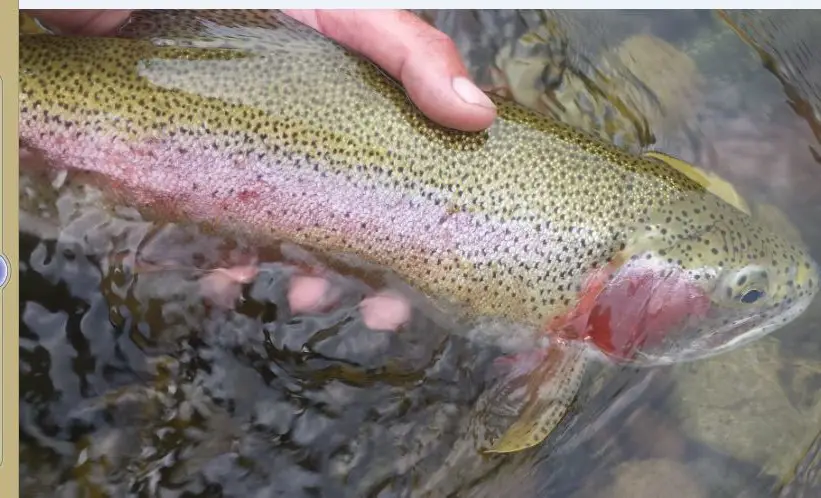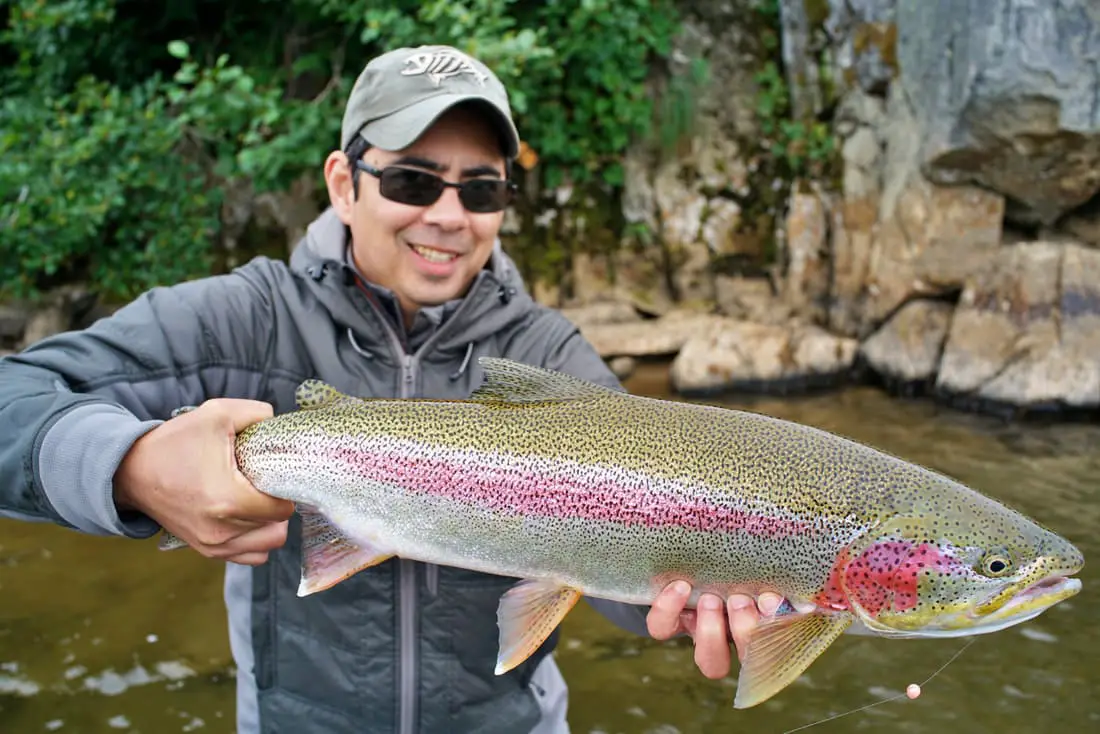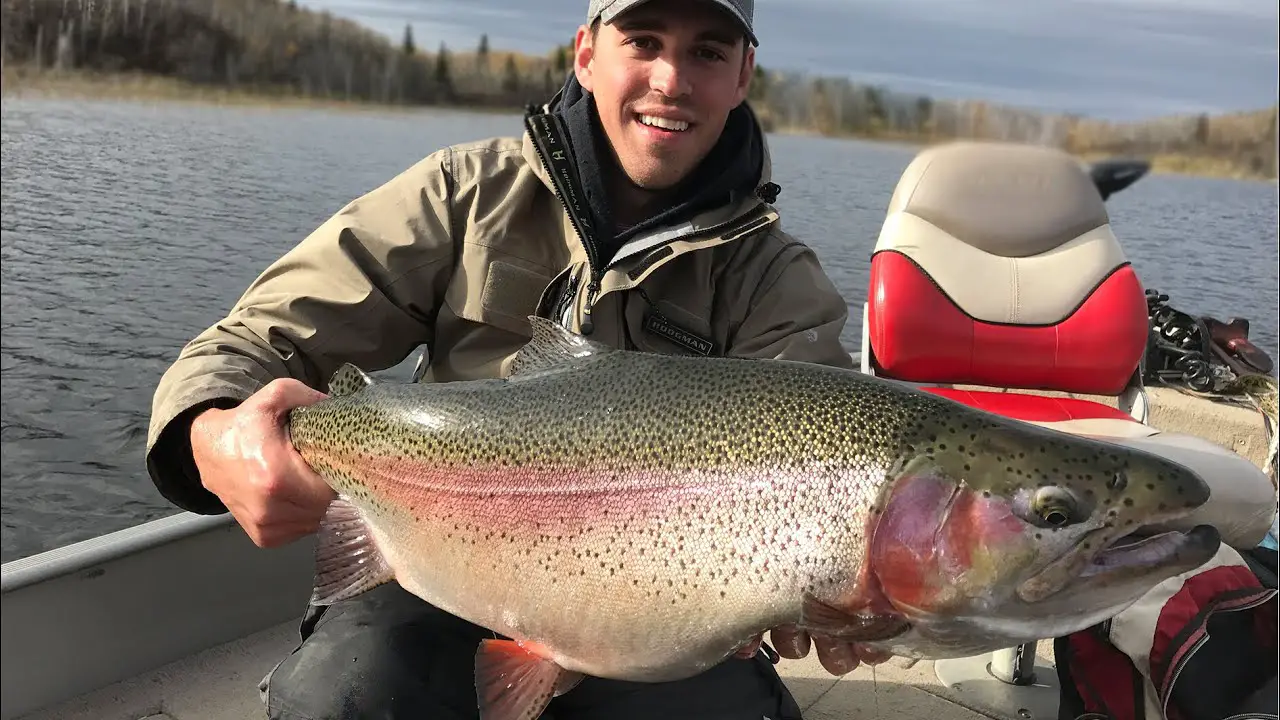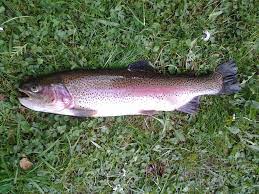This post was last updated on August 28th, 2021 at 01:55 pm
The rainbow trout is a native to cold water streams of the pacific ocean. It can be found all throughout the US, but was once limited to Asia and US coastlines. The anadromous species is called the steelhead. These fish will spend most of their lives in the ocean (or great lakes) only returning to rivers to spawn. Read on to learn more about the differences between steelhead trout vs rainbow trout.
Steelhead vs Rainbow Trout
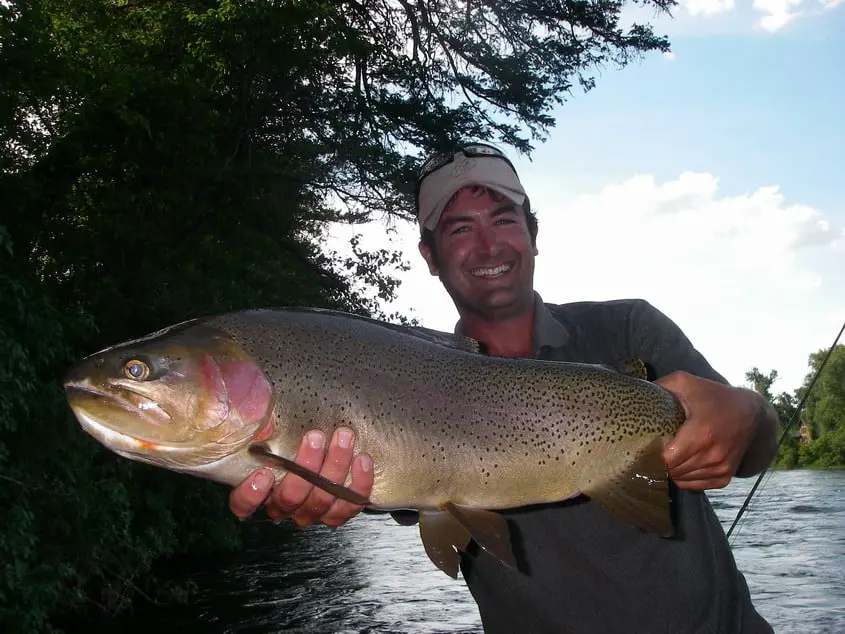
The Rainbow Trout
These fish are aggressive fighters and originally could be found in most rivers of Alaska and cold rivers of CA. These days after heavy planting, can be caught in many rivers that would have otherwise been inaccessible to them. After heavy planting efforts they are now all over the US and Canada. They are prized for their ability to fight harder than most trout species. They are also heavily stocked in ponds and streams because of their ability to withstand circumstances that would kill most other trout species.
The Steelhead Trout
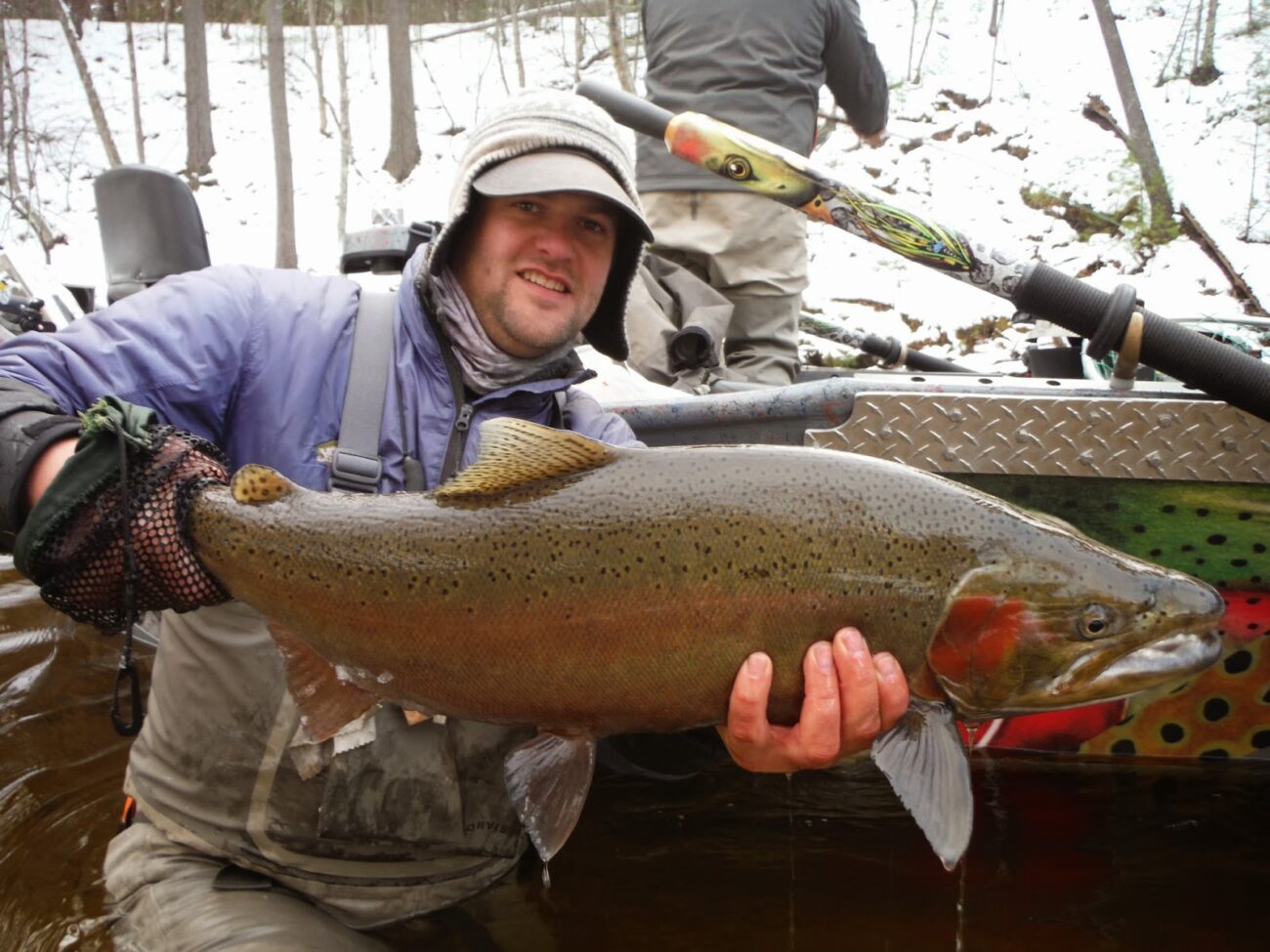
These fish are the same stock as a standard rainbow, however spend several years in large water feeding before coming inland to spawn. They grow much larger than “river native” rainbows and are a prized sport fish in each range they inhabit. Typically the steelhead will spend three years in the ocean (or great lakes) before coming inland to spawn.
Rainbow Trout Facts
The rainbows jump more frequently than most other trout, and pound for pound can outfight them all. They are a strong and durable species, compared to most trout. They are considered undesirable in many areas that the cutthroat trout inhabits, due to interbreeding between the species and dilution of the pure native cutthroat gene pool. Certain species of the rainbow trout is also known as the “redband” because of its reddish band on the sides.
Rainbow trout are an aggressive species similar to the brown trout. They will eat at all hours of the night and feed opportunistically on anything appearing edible. They are typically caught in Alaska using mouse patterns and streamers.
Rainbow vs Golden Rainbow Trout – What’s the Difference?
Along with brook trout, rainbow and golden rainbow trout are the most popular fish in all of West Virginia. Thousands of these fish are stocked into lakes and streams around the state each week during the spring season. These two types of trout may be similar in some ways, but they certainly aren’t identical.
Rainbow trout are typically a blue-green color with a distinct pink-reddish line down the length of their body. Here are some typical facts about rainbow trout:
- You’ll often find them in streams
- They eat insects, crustaceans and small fish
- Typically grow up to 30 inches and weigh 6-8 pounds
- They’re a popular game fish
The golden rainbow trout has a vivid, yellow body unique to only this fish. They also have the same distinct pink-reddish stripe along its body. Golden rainbow trout are a mutated strain of rainbow trout, making them members of the same family and very closely related. The golden rainbow trout was discovered in 1955 by a biologist who noticed the fish swimming with rainbow trout.
Some Big Rainbow Trout Pictures
Because who doesn’t love a big fish?
What does Rainbow trout taste like?
The flavor of a rainbow trout is prized around the world. Rainbow trout has a similar taste to Salmon. Rainbow trout taste is mild with a slightly nutty taste. The filets are flaky but delicate when cooked and doesn’t have an overly fishy taste. It also has small bones that are easy to remove from its flesh. The skin is edible, and meat usually has a golden color when cooked
Foods to serve with Rainbow Trout:
Trout pairs well with any foods that are fried or sauteed. It works as an excellent substitute for other common seafood, such as lobster or shrimp. It holds up well to a variety of sauces and is easy to cook, making it an excellent fish for novice cooks.
More Rainbow Trout Resources
Rainbow Trout FAQ
Do Rainbow Trout have scales?
Rainbow trout only have small scales, so they don’t always need to be scaled before cooking. You might find it necessary to scrape the fish’s skin with a descaler or the dull side of a knife if you catch a larger trout, probably over 14 inches or so.

